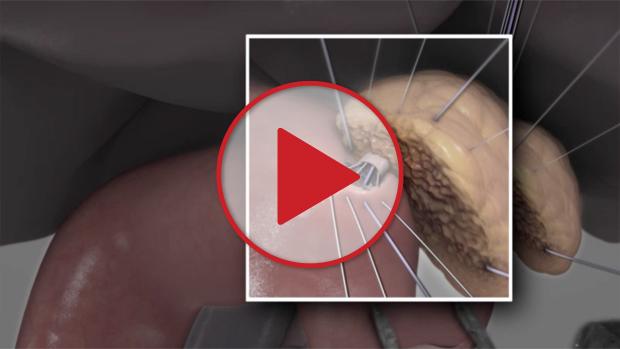Pancreaticojejunostomy
Two layer, mucosa-to-mucosa pancreaticojejunostomy technique without stent
Technique Description
- The two layer, mucosa-to-mucosa without stent technique is one of many techniques that can be used to for performing the pancreaticojejunostomy.
- The principle of the mucosa-to-mucosa anastomosis is intended to reduce the risk of post-operative stricture, and the two layer technique is intended to reduce the risk of post-operative anastomotic leaks. Even for very small pancreatic ducts and normal pancreatic parenchyma, a stent is not 'necessary' for post-operative patency or leaks.
- Absorbable sutures is important for the inner layer; non-absorbable sutures would be acceptable for the outer layer.
- Surgical operating loupes with magnification of 2.5X to 4X greatly facilitates the precise placement of the fine sutures. In addition to adequate OR lighting, a bright headlight helps define the actual anatomy.
- The full length Whipple case where thie technique is utilized can be found here .
Key Points
- The jejunostomy should be kept as small as possible to accommodate the pancreatic duct.
- To avoid tearing or cracking of the parenchyma, sutures are placed following the curve of the needle and avoiding torquing; knots are tied with sufficient but not excessive tension.
- The discrepancy between the small circumference of the pancreatic duct, and the relatively large circumference of the cut surface of the pancreas, requires that the pancreatic sutures to be placed in a radial fashion.
- An instrument to demonstrate the lumen can be helpful in the placement of sutures (i.e. a pancreatic duct probe or right-angled instrument).
- Adjunctive measures such as stents (internal or externalized) or biologic glues or drains should not be necessary with a well-constructed two layer mucosa-to-mucosa pancreaticojejunostomy.




